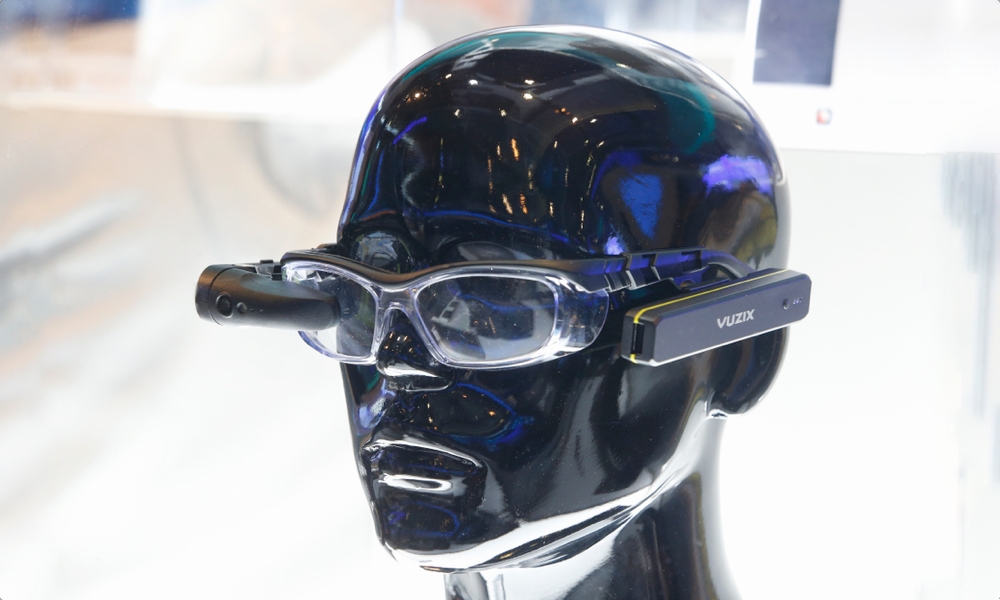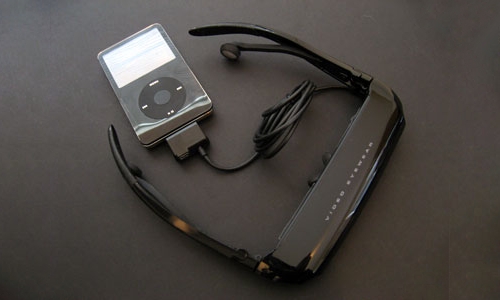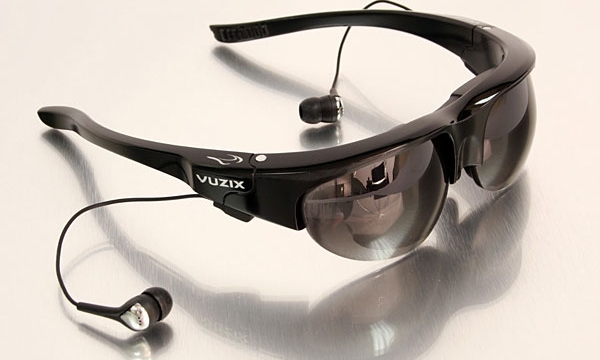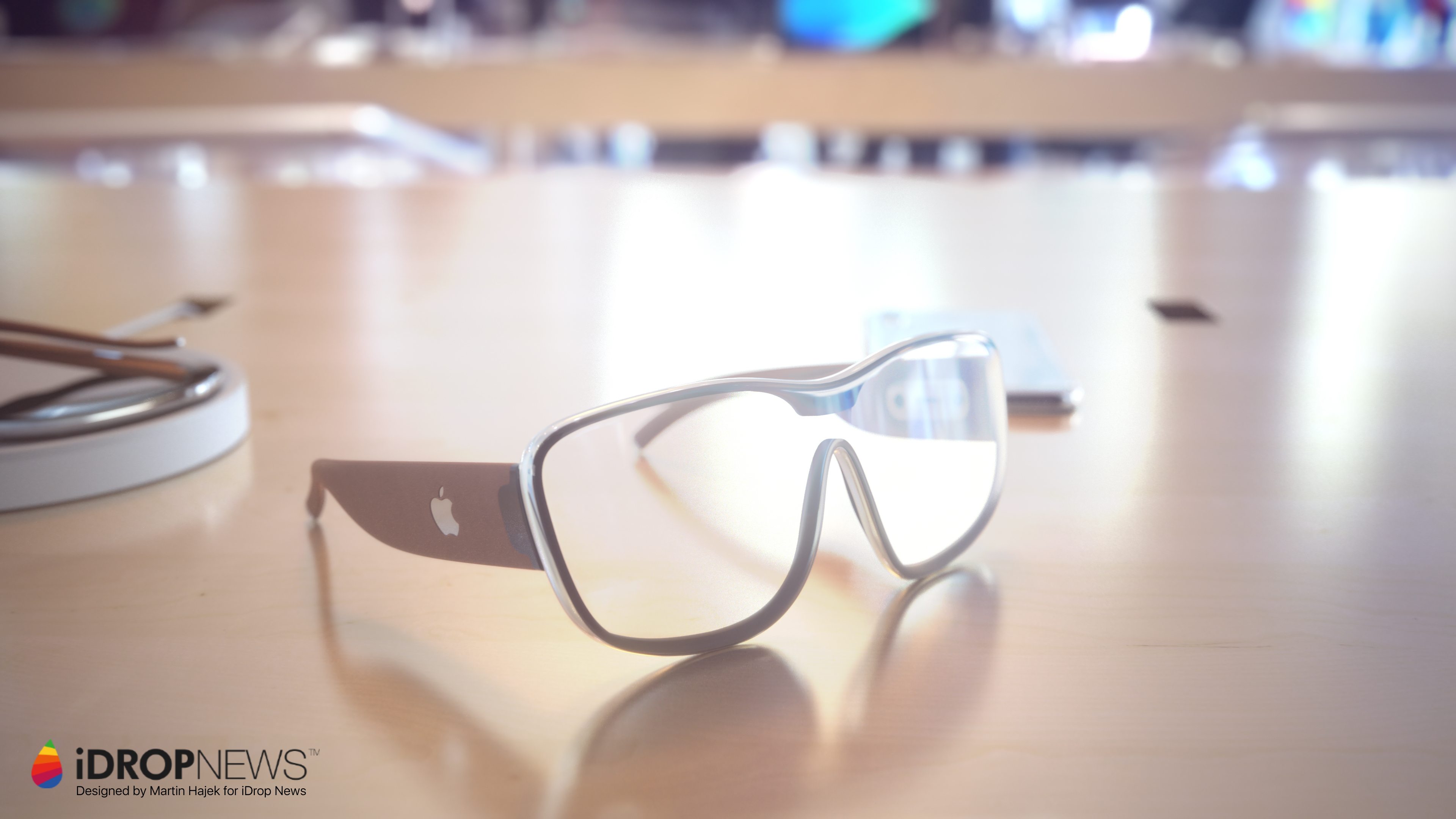Vuzix: The Company You’ve Never Heard of That Apple’s Likely to Buy Next
 Credit: zixia / Shutterstock
Credit: zixia / Shutterstock
Toggle Dark Mode
Rumours have been swirling since late 2017 about Apple’s ambitions for launching its own augmented reality headset, and while the company’s plans are remaining typically close to the vest, enough information keeps slipping out to give us an idea of what Apple’s AR headset — or more likely, glasses, are going to look like and what they’ll probably do.
Apple representatives met with component suppliers at CES 2018, and then again at CES 2019, seeking even more sophisticated components. Putting the pieces together suggests that Apple isn’t ultimately looking to build a VR headset like an Oculus Rift or Microsoft HoloLens, but rather something more akin to the style of Google Glass — a pair of glasses that can be worn more casually to provide augmented reality features; after all, a big, cumbersome headset doesn’t really seem like Apple’s style.
While Google failed miserably with Google Glass, some of that was due to the product being ahead of its time — both in terms of user acceptance and the technology available to build it. Google also marketed Glass in a very odd way, choosing to roll it out lottery-style to early adopters, and saddling it with a very high price tag even for those who were given the privilege of being allowed to buy a pair. Google’s glasses also weren’t able to avoid a cyborg-like design that generally put people off, and of course there was also the undercurrent of privacy issues — many people were at least vaguely uneasy about the possibility of the big Google machine watching everything they were doing.
There’s an Older Player in the Game: Vuzix
However, although Google failed to hit the mark with a consumer product, there’s another company that most people haven’t heard of that has been chugging along with video eyewear for almost two decades.
In fact, we first encountered Vuzix back in 2006 (it was going by the name Icuiti for a brief stint back then) when it released its iWear Video Eyewear for Apple’s new fifth-generation iPod — the first one to offer video playback — providing a nice alternative to squinting at the small 2.5″ 320×240 screen.
iWear never really went much beyond being a niche product — back in those days most users still used their iPods for music and podcasts rather than movies and TV shows, and the borg-like aesthetic of the big video glasses had only a niche appeal at best. But the company continued to iterate on that with later products improving the design and features, and by 2009 it had actually produced the Wrap 920AV — a set of video glasses that actually looked like a sporty set of sunglasses.
That was ten years ago, and Vuzix hasn’t sat still, last year releasing a set of $1,000 smart glasses, the Vuzix Blade, and showing what is, in our minds at least, the kind of design that Apple should not only be striving to achieve, but to significantly surpass.
From a design point of view, Vuzix’s Blade is the most fashionable digital eyewear we’ve seen, although that may not be saying much; while you won’t look weird wearing them, they’re certainly not what most would consider to be stylish.
Further, while Vuzix has managed to accomplish quite a bit with its latest glasses, we think it’s a stretch to call them true augmented reality glasses, as they offer more of a “psuedo-AR” experience — images are superimposed over your real-world environment, but they remain in a fixed position relative to your head, rather than being placed into the 3D environment in front of you. In other words, it’s useful for seeing status information, but considerably less useful for doing things like locating real-world objects and places. Basically, what Blade really provides is simply a heads-up display (HUD).
Apple’s Approach to AR Glasses
Apple’s work with ARKit in iOS 11 and ARKit 2 in iOS 12 strongly suggests that simply providing a HUD is not what Apple is after, and it seems like a certainty that it’s going to be looking to build glasses that can actually place information on the screen into the user’s environment, in the exact same manner as how ARKit works through the iPhone camera lens right now.
Of course, that’s a tall order, but there’s no doubt that Apple has the technological expertise and financial resources to pull it off, but what may be a more difficult challenge for the company is packing all of that into a fashionable set of eyeglasses that don’t make their wearers look like refugees from a William Gibson novel. That’s where we think there may be a strong symbiotic relationship with Vuzix, which has clearly spent many years working to crack the challenges of making advanced display technology fit into glasses with a much more normal physical design than many other companies have been able to accomplish.
While Apple may no longer be as concerned about the fashion industry as it was in the early days of the Apple Watch, the company still prides itself on an industrial design aesthetic that leans far more toward the human side, and we suspect that this will be the biggest challenge for Apple in moving forward with its new Apple Glasses — creating something that normal people actually want to wear.










